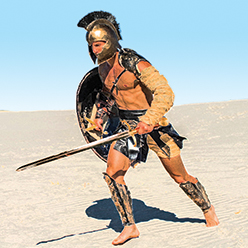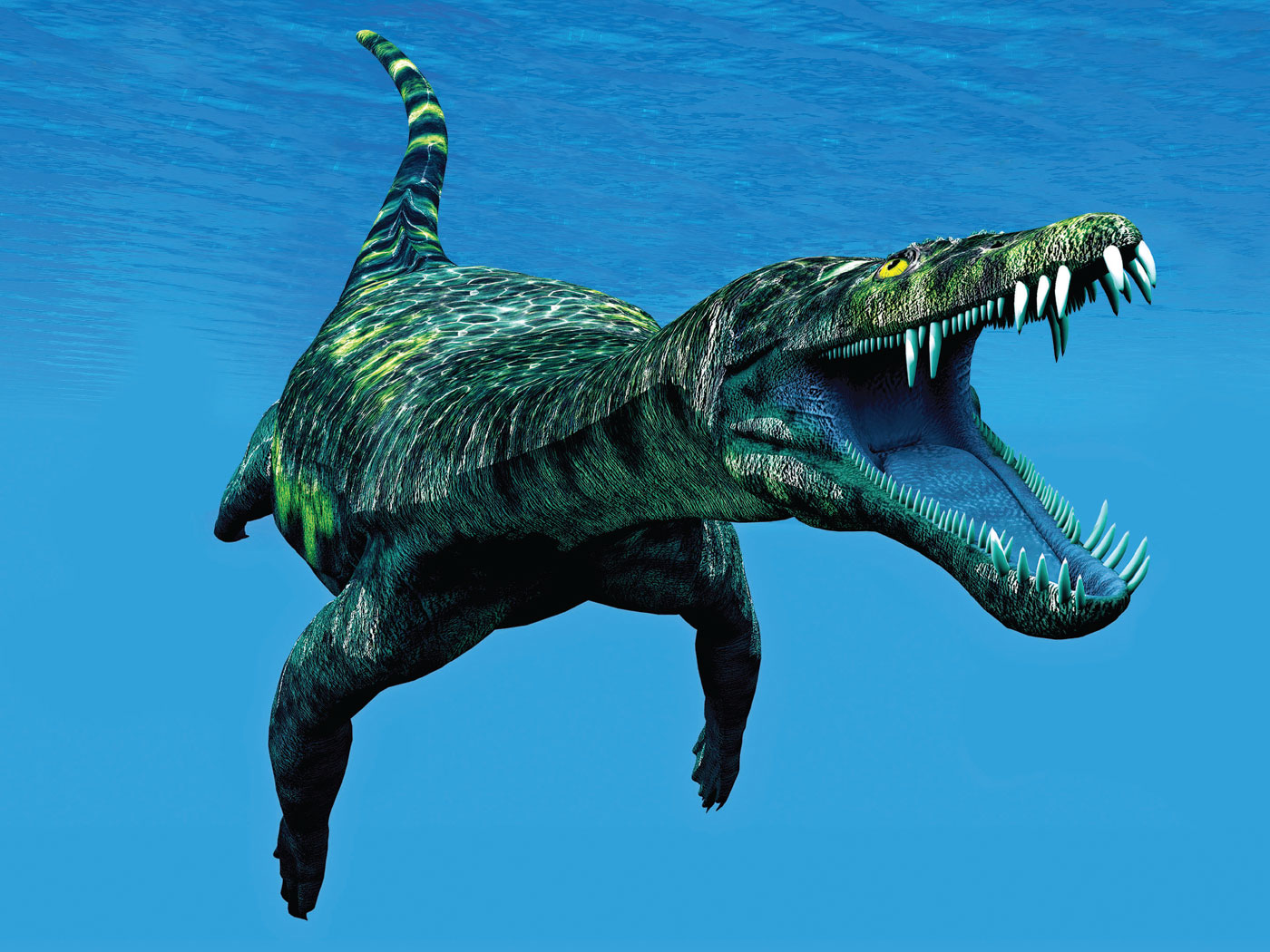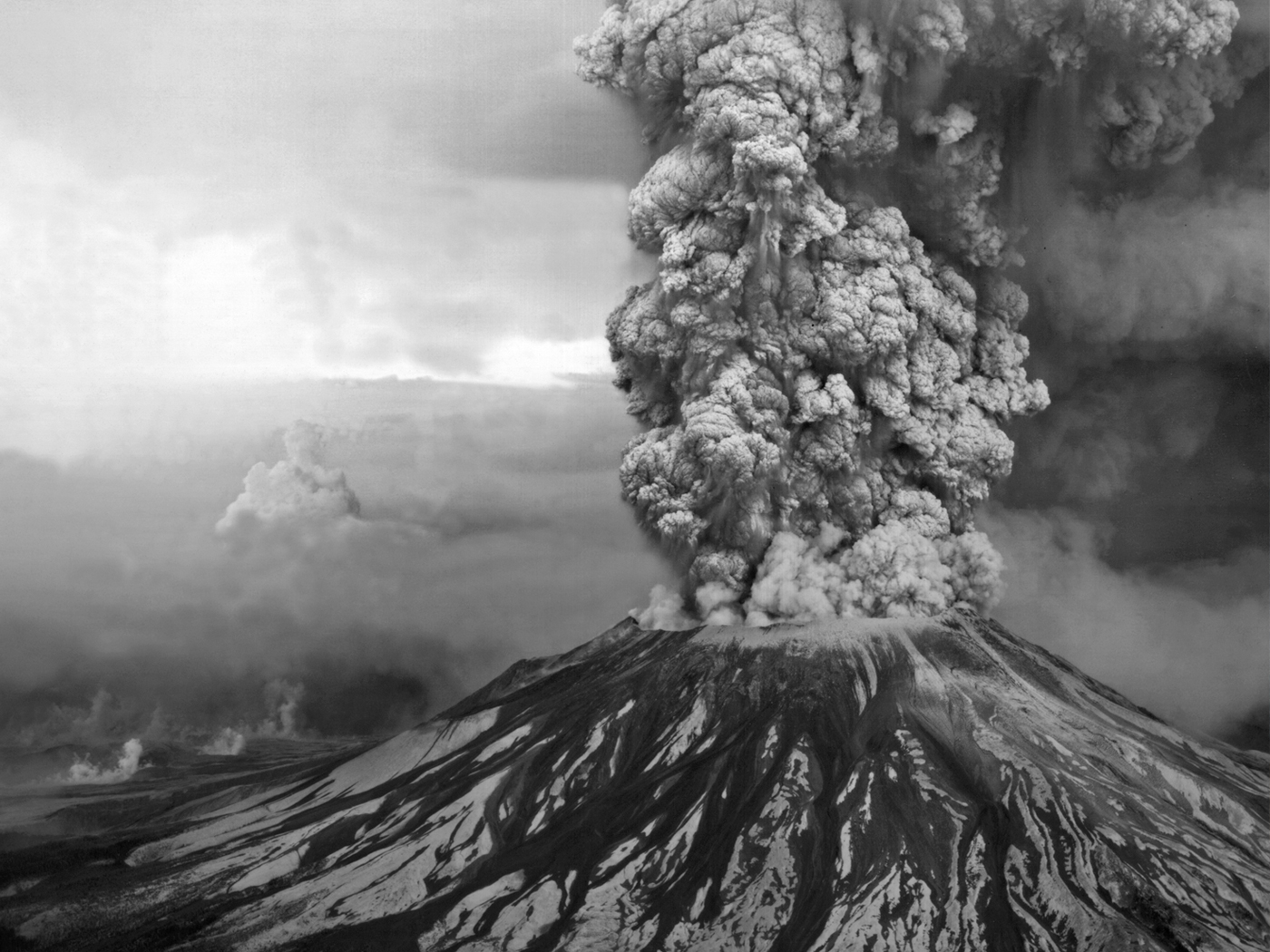 At “six cubits and a span,” Goliath stood over nine feet tall, using a conservative 18-inch cubit. Scripture demonstrates his strength by cataloging the weight of his armaments, including a 5,000-shekel (125-pound) coat of mail.1 No wonder he was the champion of Gath! He was big and strong, but was he fast?
At “six cubits and a span,” Goliath stood over nine feet tall, using a conservative 18-inch cubit. Scripture demonstrates his strength by cataloging the weight of his armaments, including a 5,000-shekel (125-pound) coat of mail.1 No wonder he was the champion of Gath! He was big and strong, but was he fast?
Modern science gives us new ways to examine the history presented in the Bible. Four scientists developed a model that accurately predicts an animal’s top speed based simply on body mass and means of locomotion.2 Their model for land-running animals generally matched most of the measured speeds of over 400 different animals, and even matched some sophisticated speed estimates for dinosaurs, including T. rex.3
The researchers showed that two factors explain why an ant is slower than a rat, which is slower than a rabbit, which is slower than a cheetah, which is faster than a hippo. At some point, greater size slows the body.
At “six cubits and a span,” Goliath stood over nine feet tall. ![]()
Energy is the first factor. Animals’ muscles spend stored chemical energy when they run. Once that energy is gone, they must pause and wait for muscle cells to replenish fuel stores. The second factor is inertia, which means resistance to changes in motion. A running animal or person must spend enough energy to propel their whole body mass. Animals eventually reach a size at which their bodies’ inertia counteracts the maximum amount of energy their muscles can store. That’s why great cats can outrun elephants.
Did Goliath reach this “slowing size,” or would his bigger, longer legs have propelled him faster than you?
To answer this question, we first need to recognize that humans run more slowly than animals of similar mass.4 This means that the new speed model does not directly apply to people. We also must satisfy ourselves with educated guesses as to Goliath’s body weight. Most formulas that estimate “ideal” body weight suggest that a man of Goliath’s height should have weighed about 450 pounds. For comparison, Shaquille O’Neal stands at seven feet one inch. He weighed around 325 pounds when he was a fit NBA player, but the ideal body weight for that height is only about 220 pounds. Goliath may have weighed more than ideal estimates.
Modern science gives us new ways to examine the history presented in the Bible. ![]()
I used the new speed model to compare how fast Goliath might have run against more normal human sizes.5 A skinny 450-pound Goliath would have run about 6% slower than a six-foot-tall man. A more robust 530-pound Goliath would have run 7% slower.
This exercise carries two messages. First, giant descendants of Noah like Goliath6 would have reached body masses where larger means slower. However, they would not have reached body masses that defied biophysics, leaving them within the realm of biological feasibility and thus biblical reality—not just myth. Giants were probably slower sprinters, and centuries of warfare apparently did them in, but they were once just as real as David’s trust in the Lord when he defeated godless Goliath.
References
- 1 Samuel 17:4-7.
- Hirt, M. R. et al. 2017. A general scaling law reveals why the largest animals are not the fastest. Nature Ecology & Evolution. 1: 1116-1122.
- They found that T. rex reached a mere 17 mph. See Schiller, F. Why Tyrannosaurus was a slow runner and why the largest are not always the fastest. University of Jena news release. Posted on uni-jena.de July 17, 2017, accessed August 15, 2017.
- I averaged the speeds of a llama, a deer, a bighorn sheep, a warthog, and a black bear as reported in the supplemental information to reference 2 at about 31 mph. Athletic people of similar weights might run as fast as 20 mph. God designed human bodies as excellent distance runners instead of being sprinters like most animals.
- The supplementary information to reference 2 included separate formulas for runners, flyers, and swimmers.
- The Bible links giant family lineage to Noah. Starting with 1 Samuel 17:4, Goliath came from Gath. Working backward almost 400 years, Joshua 11:22 identifies Gath as one of three cities where the Anakim remained after Joshua’s conquests. Numbers 13:33 and Deuteronomy 2:11 identify the Anakim (descendants of Anak) as fearfully tall giants. Joshua 14:15 notes that the city of Hebron was once named Kirjath Arba after Arba, “the greatest man among the Anakim.” Kirjath Arba had an earlier name, Mamre, according to Genesis 35:27. Genesis 14:13 indicates Mamre was named after an Amorite. Finally, Genesis 10:16 identifies the Amorites as descendants of Canaan, who was Noah’s grandson.
* Mr. Thomas is Science Writer at the Institute for Creation Research and earned his M.S. in biotechnology from Stephen F. Austin State University.



















